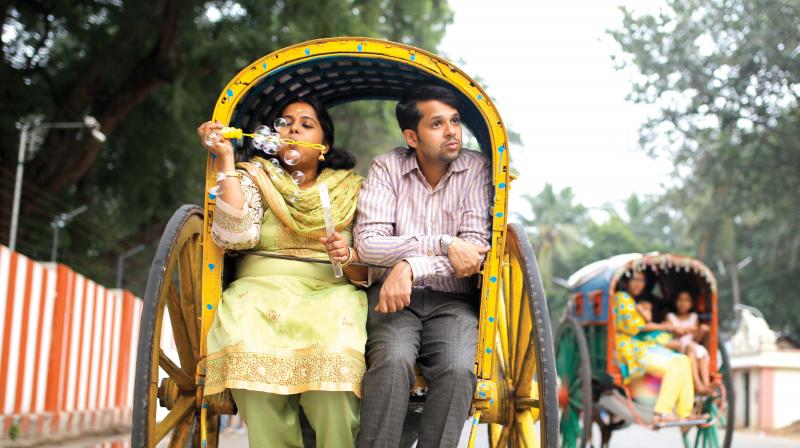When sanity beats shaming
Plump actors accompanied by Looney Tunes-copy background score have slowly started vanishing from silver screen.

It happens in various forms – subtle suggestions, seemingly-harmless hints, scathing rebuke, extremely rude comments, anonymous internet trolls. Body shaming is the result of people’s thoughtless judgment and reckless criticism of another person just because they feel that the latter doesn’t fit in the mould of so-called beauty standards. Being plump, skinny, short, tall, hairy, hairless, dark have all been part of the never-ending reasons to be body-shamed in both cyber and real world. Movies have also played a big role in shaping the public’s body shaming criteria.
For long, Malayalam films have used body shaming for claps, cheers and comic relief, but of recent, movies have started showing an exemplary empathy by criticising the age-old humiliation practice and spreading messages of body positivity. Recently-released Thamasha and Kakshi: Amminippilla broke the conventional trend of evoking laughter out of someone’s physique and instead chose to talk against bullying individuals for their build.
Ashraf Hamza, director and writer of Thamaasha, observes that while a part of our films has been empathetic, it has been making mistakes by portraying overweight, black and short people as a laughing stock. “The movie is an official adaptation of a Kannada movie which shows an instance where a character gets bullied and goes through inferiority complex. We have already had those kinds of characters in Malayalam cinema like in Da Thadiya. Rather than portraying a depressed victim, I thought of showing how society accepts differences and tweaked the second half accordingly,” he says.
Plump actors accompanied by Looney Tunes-copy background score have slowly started vanishing from silver screen. Those who aren’t the archetypal Mollywood beauty or hunk had to be the unattractive, unpromising comedians.
Ashraf sees the phenomenon a result of societal upbringing. “Bullying someone based on their body, colour or any feature wasn’t kicked off by movies. Yes, films did feed into it, but society had already created a lot of fake benchmarks for beauty; writers and filmmakers just copied it to the film. Who decides all these? Who fed into our brains that white is the nicest colour and size zero is the best physique? Every filmmaker is part of a society that promotes fake benchmarks and ideologies. People thoughtlessly cheer for a joke about an overweight girl losing balance and rolling on the ground. Society LOLs to a joke about a bald guy. Sreenivasan bears a lot of complexes due to his baldness, but he overcomes it. Still, society sets a benchmark over his head as ‘an unsuitable match’ and he faces back-to-back rejection. I believe it is high time that we address such issues through films.”
Explaining how body shaming affects individuals, Dinjith Ayyathan, director of Kakshi: Ammi nippilla, says, “The story of my film was inspired by a lot of similar instances. About his bride, the hero has certain conditions and expectations which are the result of societal influences. He had to marry a plump girl, but he refuses to continue in the relationship. The reasons he cites are her physique and her habit of snoring, which are totally absurd excuses. There are a lot many real stories of people being judged for their looks and getting rejected. Since the release of the movie, I have got several calls and messages from people who could relate to the characters. Film, as an artistically accepted medium, can definitely make a change and have a say in such issues.”
Agreeing with him, film critic Neelima Menon opines, “For the longest time, body shaming was part of a comedy track in cinema and the reactions to it sort of endorsed how the society perceived it. Films can bring a change by portraying matters in the right way. We slowly understand that body shaming is nothing to laugh about. And it’s good to see that the issue is being sensitively addressed. Thamasha is interesting that way. It had a plus-sized woman playing the main lead and she is happy, independent and unapologetic about it.”
Are we seeing the end of it soon? “Like misogyny, racism, casteism and ageism which are often a result of social conditioning, it will take time for society to truly empathise with the issue. The only way to make a change is to be the change,” she adds.
Away from silver screen, in the real life, people of various shapes, size and colors are heroes and heroines of in their own lives. With onscreen revolution agreeing to it, off screen hilarity based on physical attributes will hopefully change in the long run – with a whiff of fresh air like the inspiring perspectives and feel-good messages.

